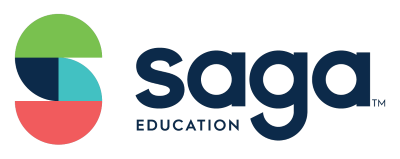Mid-Year Interventions: Maximize Learning Outcomes With High-impact Tutoring
February 1, 2024Learning loss and opportunity gaps are ongoing challenges for schools. Many school leaders consider interventions before a new school year starts, but schools don’t need to wait until Fall to implement learning solutions to improve outcomes. Mid-year interventions can be integrated into existing teaching curricula to increase student achievement through the second half of the school year.

There are advantages to adding solutions like high-impact tutoring in the Spring semester: students are actively engaged in the school year routine, and teachers have had a chance to assess where students are at in their learning versus waiting until the next academic year to begin. Ultimately, the most important thing for students and school districts is to address learning loss as early as possible so recovery and further learning are effective.
Assess and Address Learning Loss and Low Student Achievement Now
The process of assessing student achievement and addressing gaps in learning can start now rather than waiting until Summer school or remediation the following year. Here are some key indicators of learning loss and ways to spot needs in students who need extra academic support to succeed in the current school year.
Reflect on the past half-year
Start by looking at the goals you set going into this academic year. Learning, teaching, and district goals can be assessed to identify areas for improvement, resourcing needs, and budget considerations. Testing and classroom performance can give valuable insight into how effective current strategies are at overcoming learning loss and meeting goals to improve opportunities for all students.
Identify learners in need of interventions
By the middle of the school year, teachers and staff can identify learners who need interventions, including remediation, differentiation, and social support. Some signs to help you identify students demonstrating learning loss or additional needs are:
- Low or declining test scores
- Difficulty with grade-level coursework
- Poor or declining grades on homework and projects
- Missing assignments
- Disorganization in their work
- Low confidence and embarrassment leading to avoidance
- Inconsistent performance
- Poor participation
- Poor attendance
- Failing classes
Students may present just one or two symptoms, or they may be experiencing a snowball effect. By the middle of the school year, coursework often becomes more challenging for these learners because they have to use skills they’re not confident building upon. This can prevent them from participating and completing the work. Adding academic support at this point is critical for recovery and continued learning.
Consider high-impact tutoring as an extension of your existing teaching curriculum to drive academic success for all students
Many interventions and implementations are available to help districts overcome learning loss and drive success for students who demonstrate greater academic needs. However, many of these interventions have barriers to participation and implementation because they rely on family involvement, require transportation, come with logistical complications, and have high costs. Many also address one or two challenges but do not significantly improve outcomes or don’t address the related needs of the student.
High-impact tutoring implemented as an extension of your existing teaching curriculum can drive academic success for all students without spending time outside school hours or isolating students from their classes and peers. It also provides students with learning tools, helps them build good habits and routines, establishes positive relationships, and has measurable related effects that improve their overall outcomes.
High-impact tutoring addresses learning loss and opportunity gaps
High-impact tutoring is data-driven, and its positive results are supported by research. The University of Chicago Urban Labs rigorously evaluated the impact of Saga Education’s High-impact Tutoring program via large-scale randomized controlled trials, the gold standard in program evaluation. Here’s what they found:
- Students learn up to 2.5 years’ worth of math in one academic year.
- The opportunity gap* is closed by nearly 50% in one academic year.
- Math course failures are reduced by as much as 63%.
- Course failures in non-tutored subjects are reduced by as much as 26%.
- Student attendance improves by as much as 18 days per academic year.
This game-changing impact is against a national backdrop of limited success stories of improving academic outcomes.
* Opportunity Gap: Refers to the ways that uncontrollable life factors like race, language, economic, and family situations can create a disparity in educational performance, career prospects, and other life aspirations.
High-impact tutoring increases self-efficacy and supportive resources
Self-efficacy in students is enhanced by having supportive resources and connections. When kids feel seen and supported by a consistent, trusted adult who is invested in their well-being and success, they can tackle challenges and take more risks. Students must feel safe making mistakes and learning new things for them to learn deeply. This is especially important for students who may have low confidence in their ability to learn and achieve.
High-impact tutoring is built around students learning best in close relationships. To support students, high-impact tutoring is implemented into normal classroom time.
How it works
- Sessions occur 3x per week during class time.
- Tutoring sessions last for 30-50 minutes.
- Each group consists of 1 tutor to 3 students.
- All students in the class receive tutoring as part of the curriculum.
- Each tutor works with the same group of students for the entire academic year.
Implementing in-school tutoring in small groups allows for differentiated instruction, deep learning, small group work with peers, one-on-one interactions, and close monitoring of progress.
Saga provides tutors with live, ongoing training and feedback to ensure that lessons offer high-quality instruction, that students benefit from the experience, and that each tutoring session is efficient and effective.
Tutors develop close relationships with their groups and positive working relationships with families, teachers, and staff, increasing the circle of support for students. The more support and positive learning experiences kids have, the better their chances of success.
High-impact tutoring supports teachers and school districts
Implementation often begins at the start of the academic year, but for districts grappling with low achievement, poor reviews, and funding concerns, waiting until the following school year to start can have serious consequences. Adding high-impact tutoring mid-year can accelerate learning and get students back on track within the current school year, setting them up for success for the following Fall.
High-impact tutoring also frees up classroom time for teachers who can benefit from additional support. Having the additional in-school time to plan and complete lessons, provide personalized attention and instruction, grade assignments, and review student progress is valuable to educators who often lack time and resources.
Additionally, high-impact tutoring can be implemented without significantly impacting budgets, staffing needs, or logistics. It is an accessible lower-cost intervention with proven results backed by research and experience.
Explore the many benefits of implementing high-impact tutoring for the Spring semester in your school.
Don’t wait until the next academic year to help your students succeed. Find out how high-impact tutoring can accelerate learning so your students can finish the year strong and gain confidence to help them start the new school year off on solid footing.
